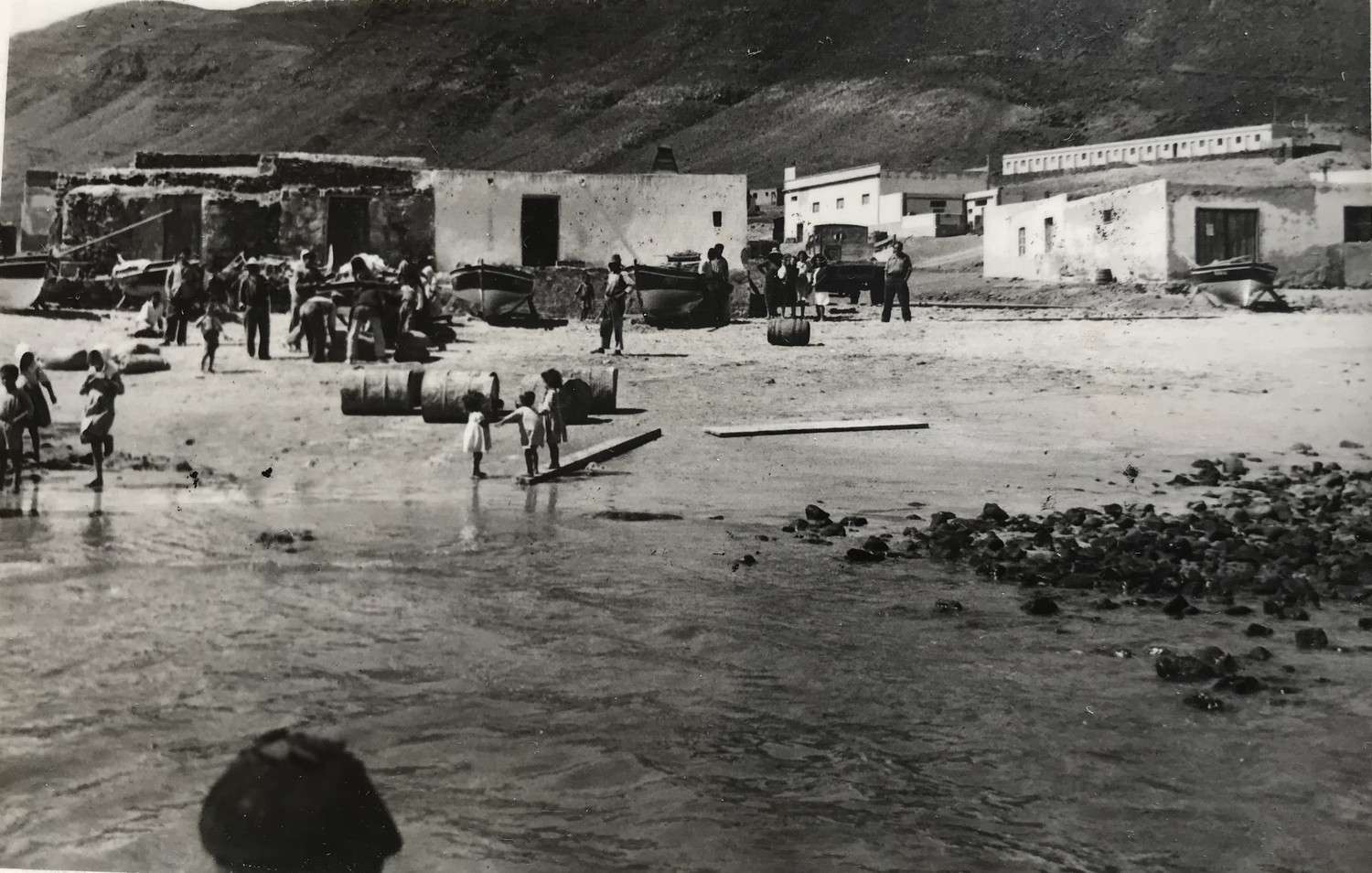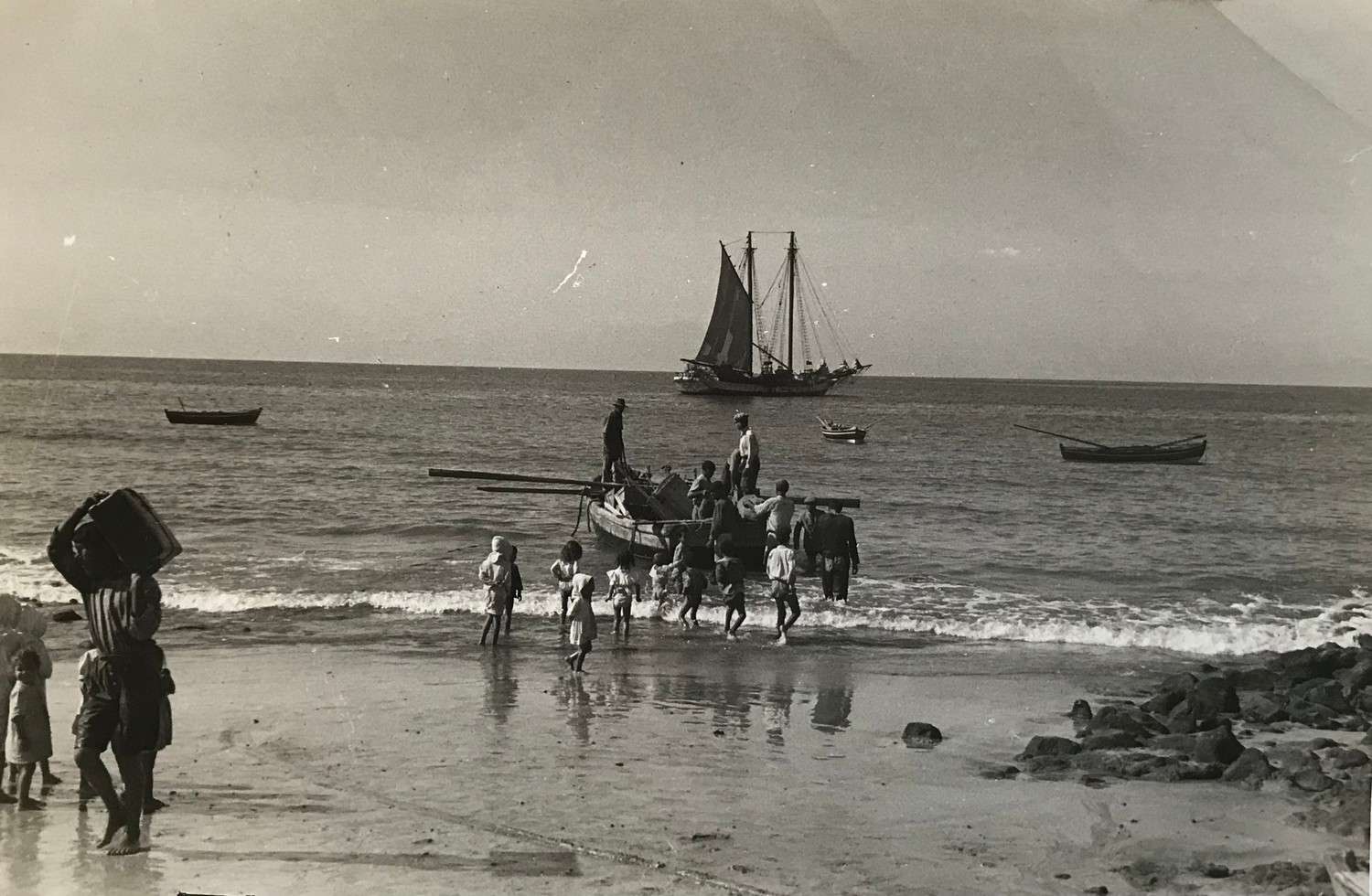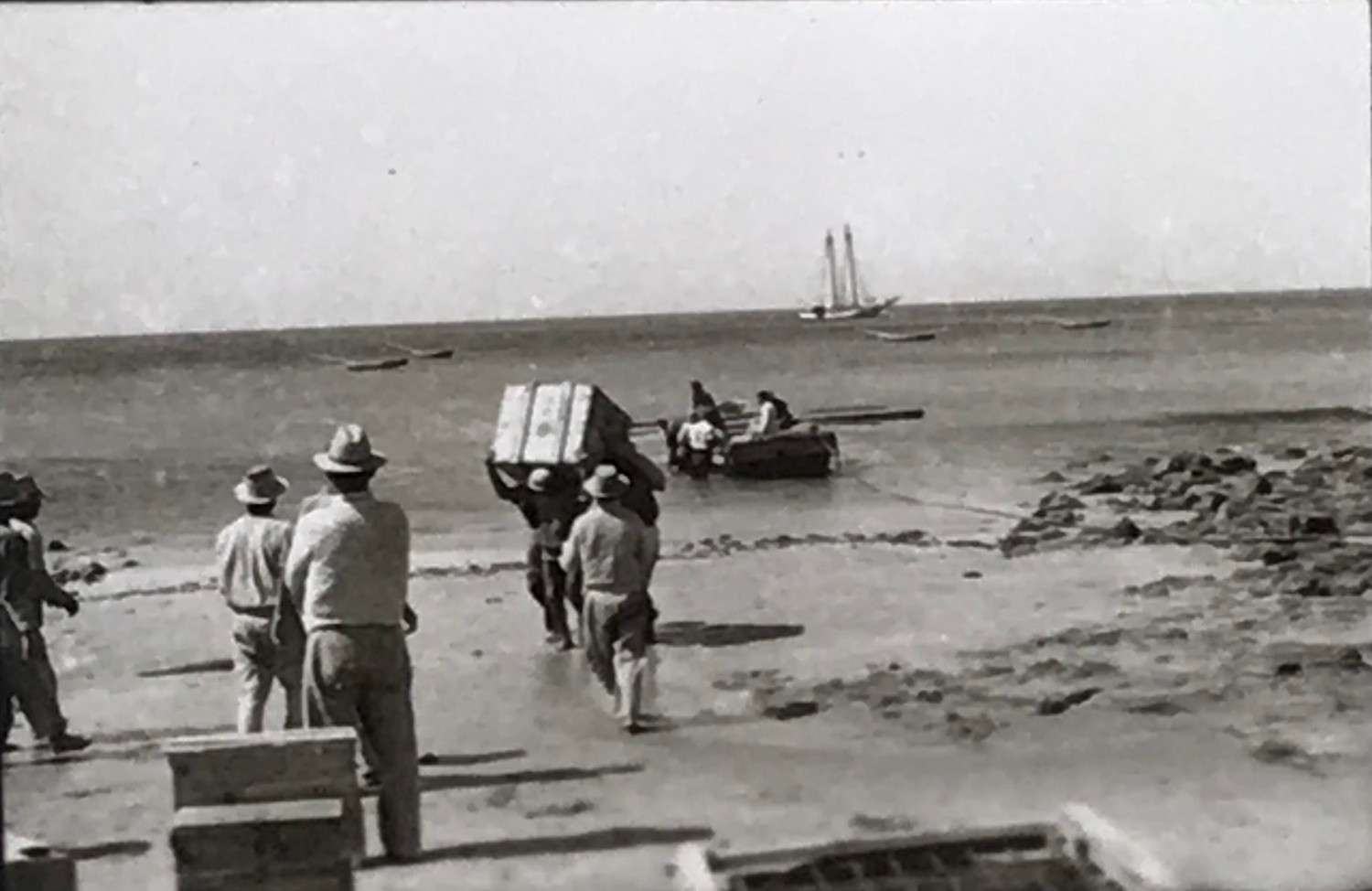Regarding the materials used in the construction of the house, in Cofete there was just sand, lime and stones. The rest of the materials, such as concrete, iron, bricks, wood, tiles, etc., came from Gran Canaria or Tenerife. It was generally the Guanchinerfe that unloaded the goods on the shore of Cebada beach in Morro Jable.
 In the picture, we can see Mr. Guillermo on Cebada beach watching how the goods were being unloaded of the Guanchinerfe, and behind him we can see the van. On the sand, there are diesel oil cans
In the picture, we can see Mr. Guillermo on Cebada beach watching how the goods were being unloaded of the Guanchinerfe, and behind him we can see the van. On the sand, there are diesel oil cans
 The Guanchinerfe anchored opposite Cebada beach and a small rowing boat brings packages to the beach.
The Guanchinerfe anchored opposite Cebada beach and a small rowing boat brings packages to the beach.
 Unloading on Cebada beach
Unloading on Cebada beach
Between 1946 and 1949, in order to take those materials to Cofete, they had to be taken on the van to Gran Valle ravine, and there, donkeys and camels would carry them the rest of the way, going up the mountain and going across Degollada toward Cofete downhill until they reached the location of the house.
At the beginning of 1947, the van broke down for a couple of months. In this letter from Guillermo Schrauth dated 24/2/1947, we can see that Mr. Brito was working to repair the van. He was a mechanic who came from Gran Canaria for that purpose. On page 2: “The most urgent thing to do is to bring the necessary materials to Gran Valle (on the van)and then be taken by camels and donkeys to the warehouse in Cofete”. At that time, they felt pressed to fix the van in order to be able to bring the heavy machinery and tools that had come from the Mainland to the base in Gran Valle mountain, to be then used for agricultural activities carried out on the most fertile area of Jandía, Vega de Cofete —as well as concrete, iron, bricks and bathroom ceramic materials for the house—.
It’s an interesting historical fact about sea transport among the islands, that on letters sent between 1948 and 1949, as well as the Guanchinerfe (the only one that did the Gran Canaria – Fuerteventura route regularly, and whose captain was Mr. Miguel García), another two engine-sailing boats were mentioned, the Herbania and the Juanita. There were also steam boats like the San Rafael, Cazón, Bartolo, León y Castillo and Viera y Clavijo.

